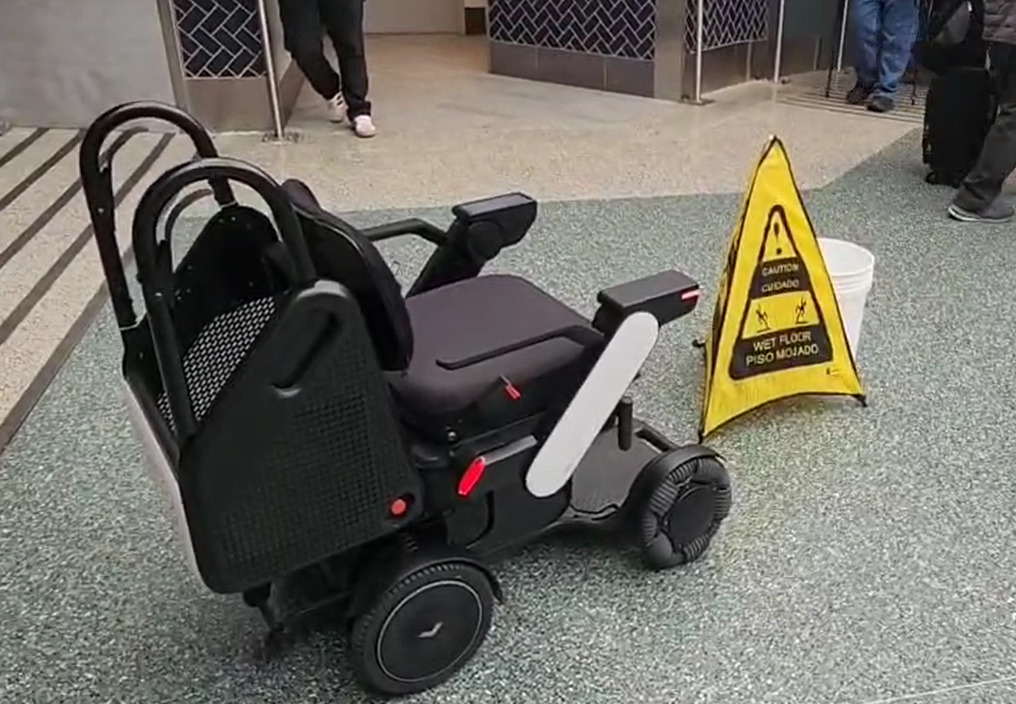The recent deployment of a self-driving, electric wheelchair at Sea-Tac International Airport caught the attention of many travelers. After observing the wheelchair in action, it became apparent that it was struggling to navigate through the airport. One incident involved the wheelchair getting stuck behind a sign and another incident occurred when it was stopped by a short yellow tent and bucket, resulting in it repeatedly asking for assistance until a human intervened. These incidents highlighted the limitations of autonomous mobility devices in complex environments such as airports.
An Alaska Airlines spokesperson explained that the wheelchair’s mapping system was designed to follow a specific lane to reach approved points within the airport. When temporary obstacles such as wet floors are detected by the wheelchair’s sensors, it triggers a standard response to alert nearby humans for assistance. While this safety feature is intended to prevent accidents, it can also impede the wheelchair’s ability to navigate independently. This issue is not unique to the self-driving wheelchair at Sea-Tac Airport and has been documented in previous instances.
The self-driving wheelchairs deployed at Sea-Tac Airport are manufactured by Whill, a company based in California and Japan. Whill has been conducting test programs and regular deployments of its devices at various airports in the U.S. and abroad. Despite the challenges faced by the self-driving wheelchair at Sea-Tac Airport, the company continues to explore opportunities to improve its autonomous mobility devices and enhance their capabilities. As technology continues to advance, the potential for self-driving wheelchairs to provide increased independence and accessibility for individuals with mobility impairments remains promising.
The limitations experienced by the self-driving wheelchair at Sea-Tac Airport underscore the complexities of developing autonomous mobility devices capable of safely navigating dynamic environments such as airports. While advancements in sensor technology and mapping systems have improved the capabilities of self-driving devices, they are still susceptible to challenges such as temporary obstacles and unexpected encounters. Addressing these challenges will require ongoing innovation and collaboration between manufacturers, airports, and regulatory bodies to ensure the safe and efficient operation of autonomous mobility devices in public spaces.
As self-driving technology continues to evolve, there is an increased focus on ensuring the accessibility and usability of autonomous mobility devices for individuals with disabilities. The deployment of self-driving wheelchairs at airports represents a significant step towards achieving greater independence and mobility for individuals with limited mobility. By addressing the limitations and challenges faced by these devices, manufacturers can further enhance their capabilities and expand the possibilities for integrating autonomous mobility devices into various public environments.
In conclusion, the deployment of self-driving wheelchairs at Sea-Tac Airport highlights the potential benefits and challenges of autonomous mobility devices in public settings. While the current limitations of these devices are evident, ongoing efforts to improve their navigation capabilities and address safety concerns are essential for their successful integration into airports and other public spaces. As technology continues to advance, the promise of increased accessibility and independence for individuals with mobility impairments through self-driving devices remains a significant opportunity for innovation and progress in the field of assistive technology.


